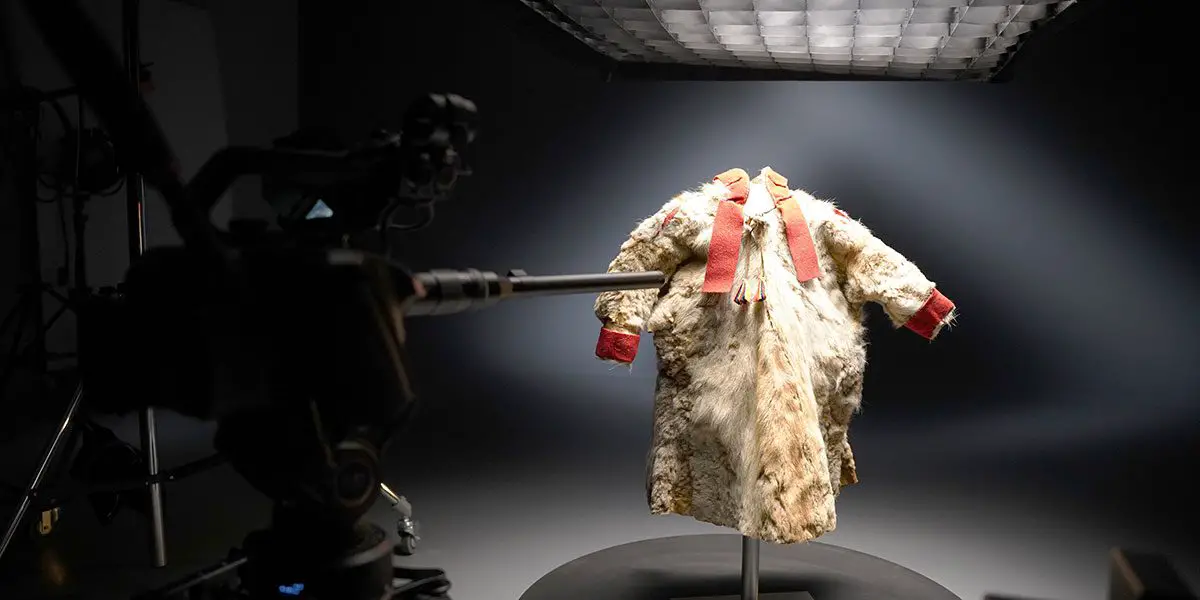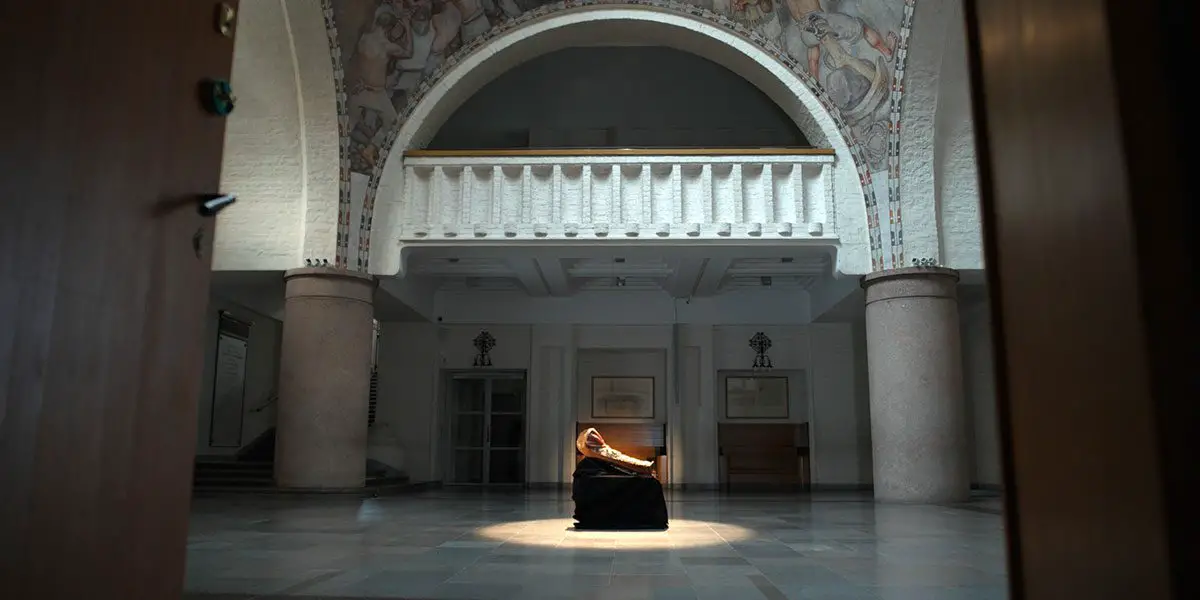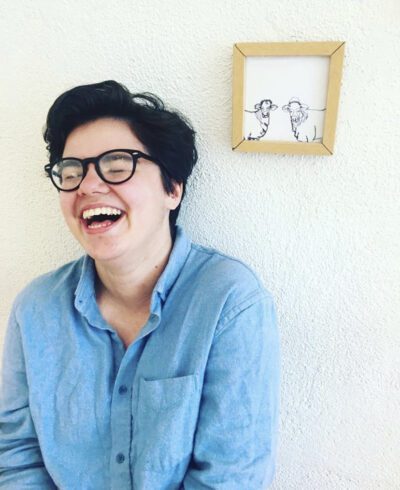Máhccan (Homecoming) is not the story of a person coming home. Not in the traditional sense anyway. The documentary is about the return of 3,400 Sámi artifacts from the National Museum of Finland to the people of Sámiland. They live in the region of Sápmi, an area that covers parts of northern Norway, Sweden, Finland, and the Kola Peninsula of Russia. A tense and fraught relationship between the Sámi people and the Scandanavians dates back thousands of years. In the 19th century, the Norwegian and Swedish governments believed that the Sámi people needed to leave behind their “primitive” ways and become modernized. The Sámi language was banned, children were sent to state-run boarding schools, and laws were passed to limit Sámi rights. Their land was also affected by modern environmental choices to mine, dig for oil, and other commercial developments.
All of this historical information lays the groundwork for Máhccan’s opening scene, in which Sámi filmmaker Suvi West stands in the archives of the National Museum of Finland. The curator shows her boxes and boxes of her people’s important cultural artifacts, none of which she has ever seen or touched. Tears well in her eyes at the weight of this homecoming. Of Sámi artifacts returning to the land they came from. The boxes are filled with jewelry, clothes, spiritual items, and so much more. In the archives, they’re wrapped in plastic and stored in wooden boxes, hidden away from the descendants of the people who made the objects. From an outsider’s perspective, it’s easy to assume that the objects are so old they can’t be traced back to any one individual, but they can. It’s an utter gut punch when director Suvi asks how a woman feels to know she’s holding her grandmother’s possessions. The woman replies that it feels like an answer. An answer to what, she doesn’t know, and because of the loss of so much of the history of the Sámi people, she may never fully know.

Another woman talks about the return of the artifacts and says that she can show her children her “family’s story without the interpretation of a middleman.” The ability to tell one’s ancestral story should not be something that is up for debate. There’s power in knowing where you come from, and humanity has a long history of breaking ancestral ties for someone else’s financial gain. Máhccan gives the Sámi people a rare opportunity to reclaim what was taken from them and center themselves at the heart of the narrative. Even so, with 3,400 artifacts returned, there are still more objects in museums. Suvi, the director, talks about how conflicted she is in this process because she’s thrilled that she can see her community be reunited with their families’ possessions, but Suvi hasn’t found anything that connects her to her familial line. While in Gothenburg, Sweden, Suvi sees a dress that once belonged to her relative Biennas-Juoni. It’s an emotional moment, because here is an object she can hold that once belonged to a direct relative. So near and yet so far.

More than the journey of these as they return to the place they came from, Máhccan is a reckoning of historical loss and pain. The Sámi people are not the only example of a culture that has been attacked, and Máhccan is not alone in asking questions about the ideas of otherness, identity, assimilation, and the morality of museum exhibitions. What does it mean to be Sámi enough? That’s something Suvi keeps coming back to as she travels to museums. It’s bizarre to hear curators explain to Suvi that the color red is primarily used for girls, a fact Suvi is already well aware of. To other people, that is a historical “did-you-know” fact, but to Suvi, it’s a painful reminder that her history and ancestry are seen as something best kept in a museum behind glass to be studied, not lived.
So much of the pain in Máhccan will speak to people outside the Sámi region who know what it’s like to mourn the loss of cultural artifacts and heritage. At the same time, there is so much beauty on display in the documentary. Guiding the audience through the natural landscapes and historical places is a lyrical call to Sámi ancestors, asking for advice and direction. Máhccan is an ode to a place and a people made by someone who intimately feels their pain. Not just the ones living today, but those who lived long ago. Those whose hands beat these drums, sewed these clothes, and built the legacy Máhccan continues to grow upon.




